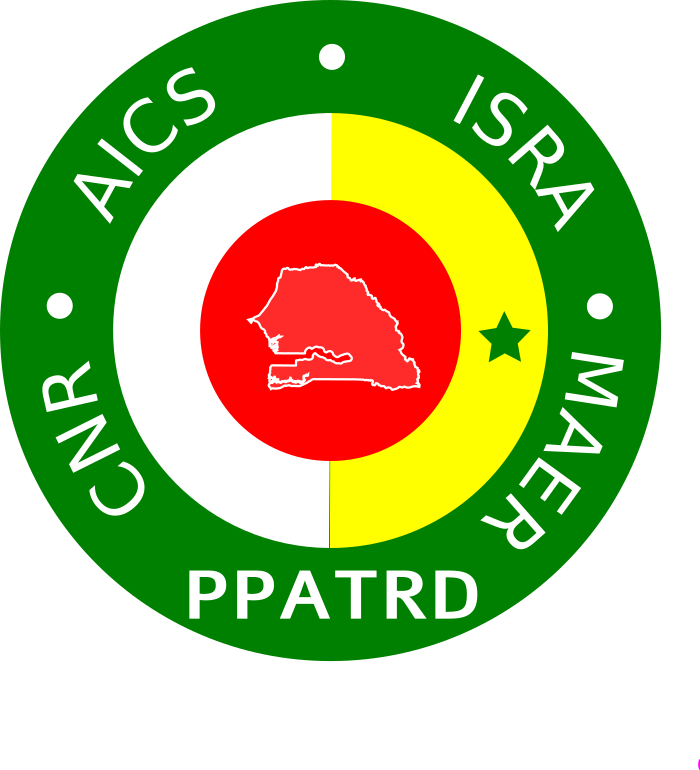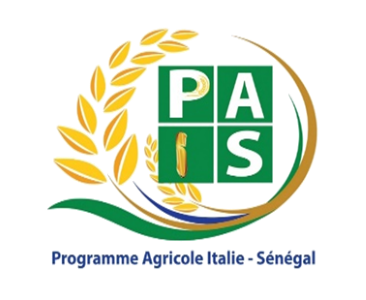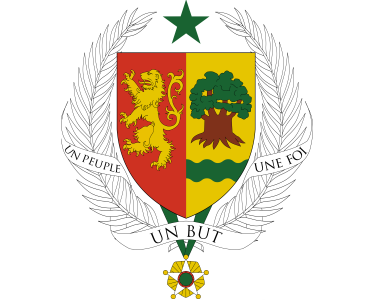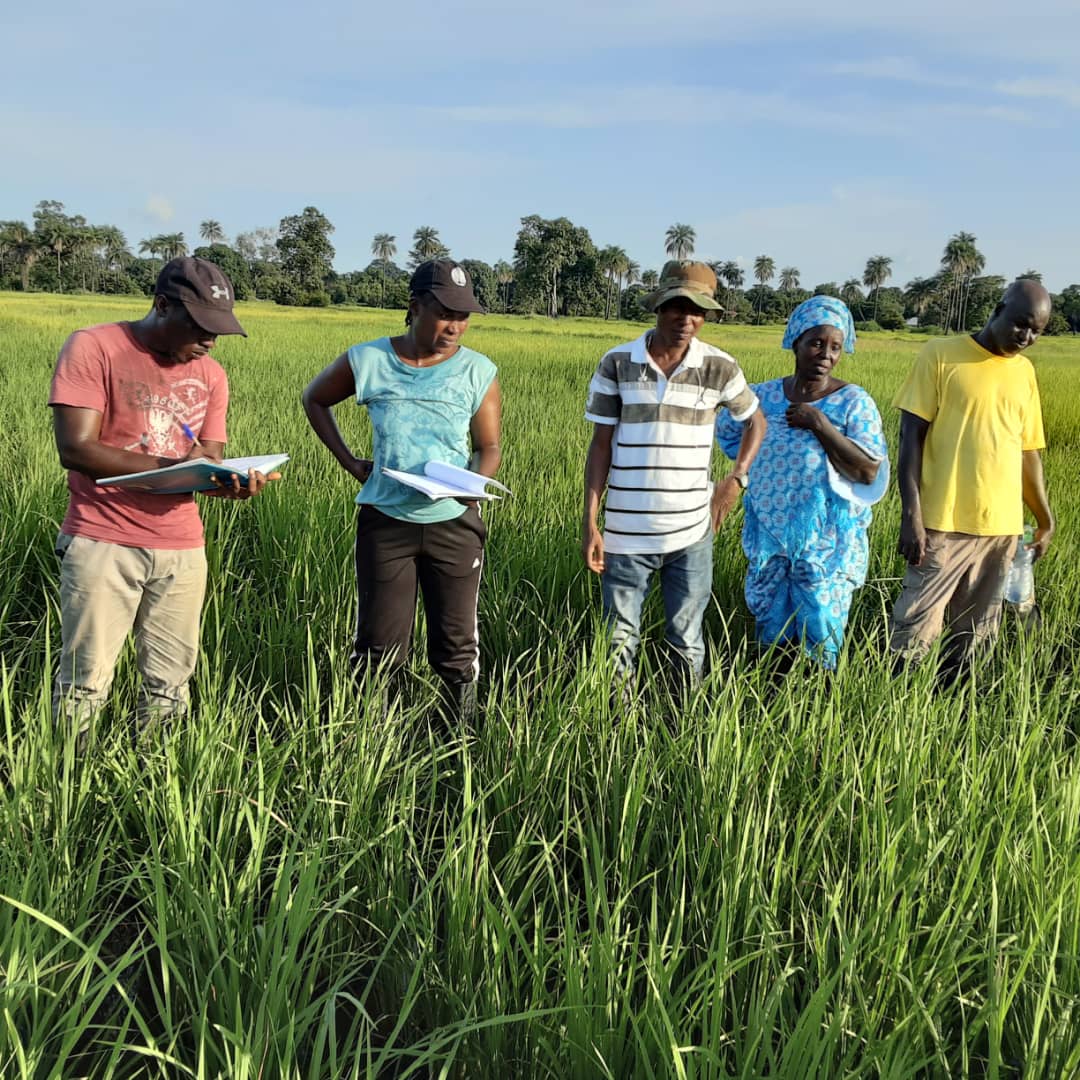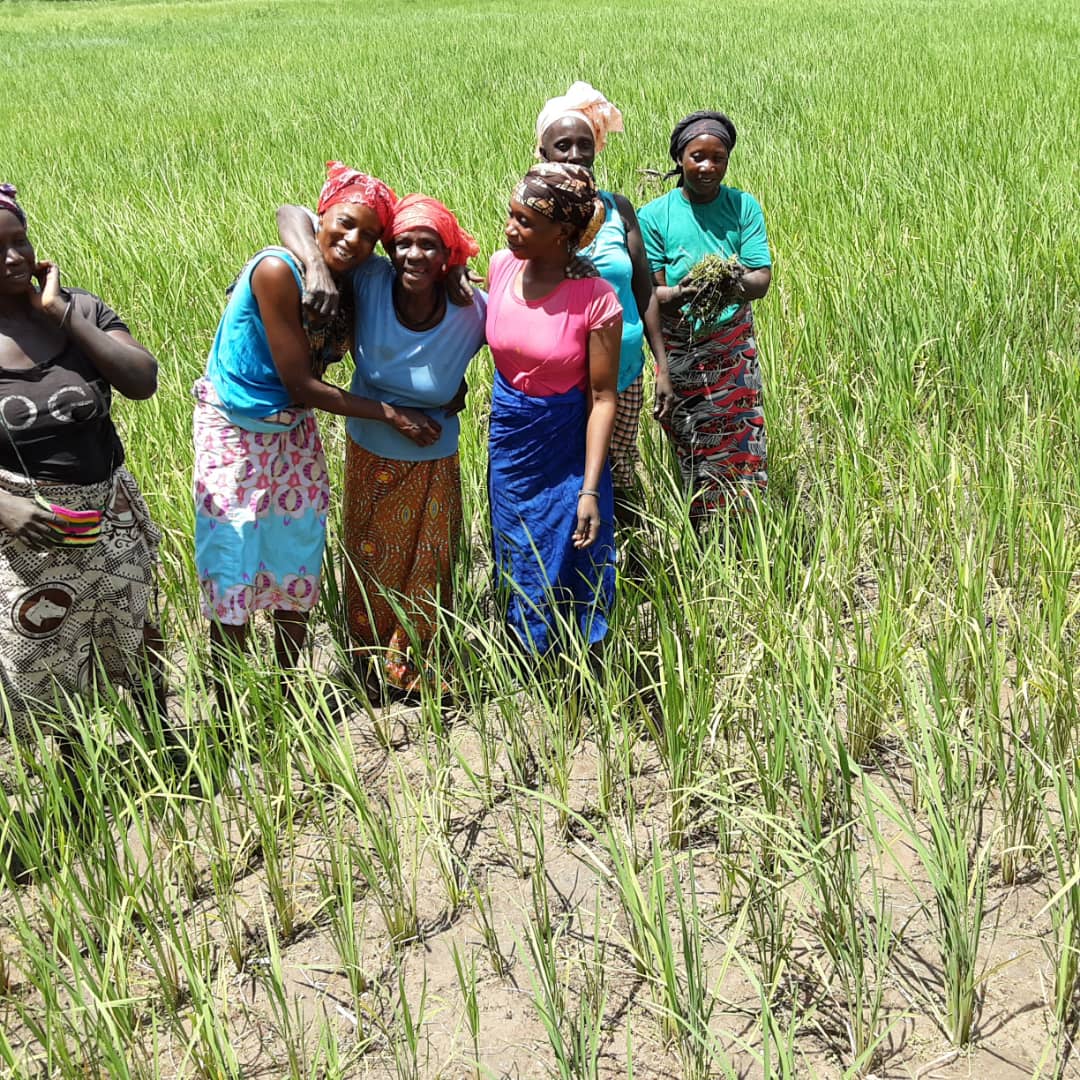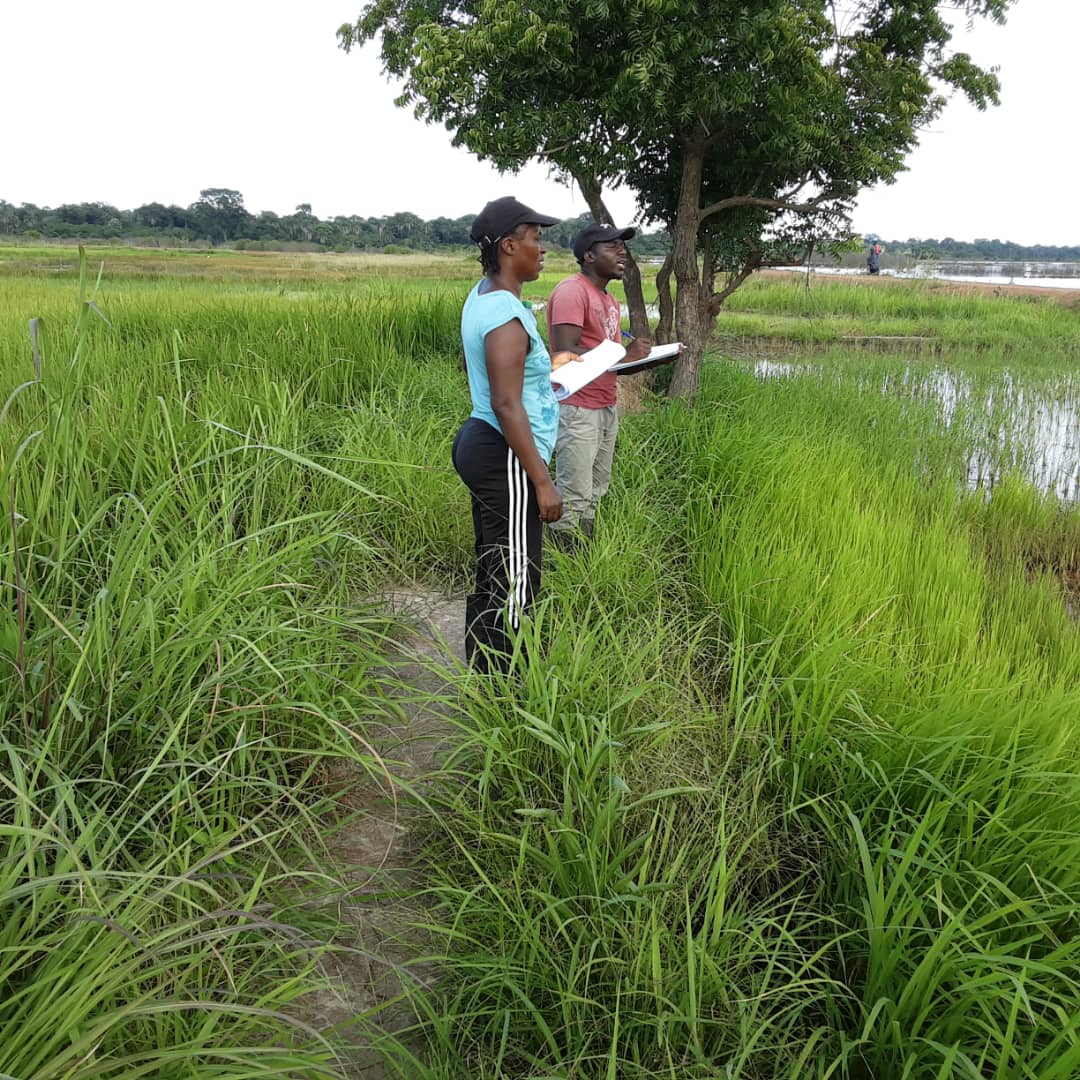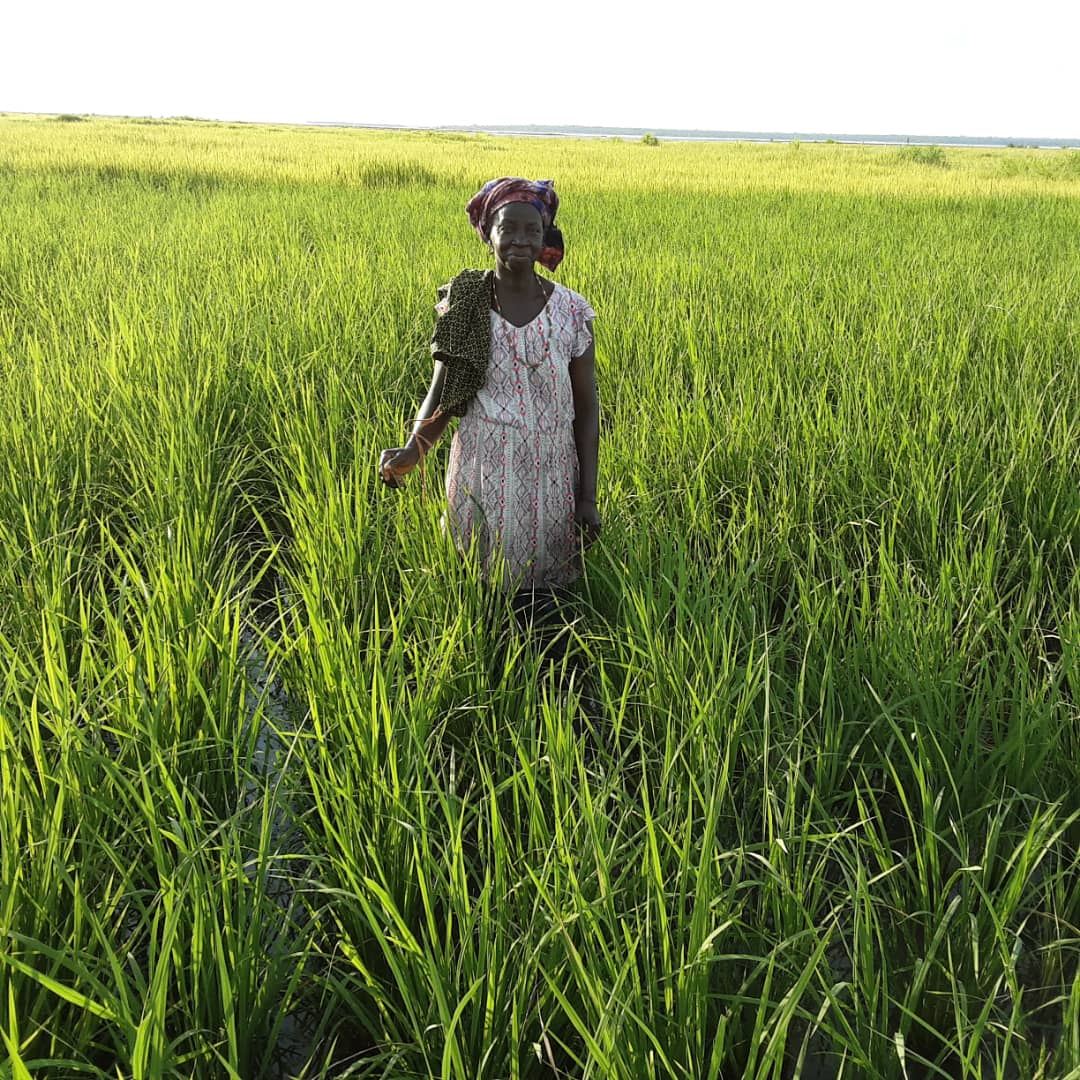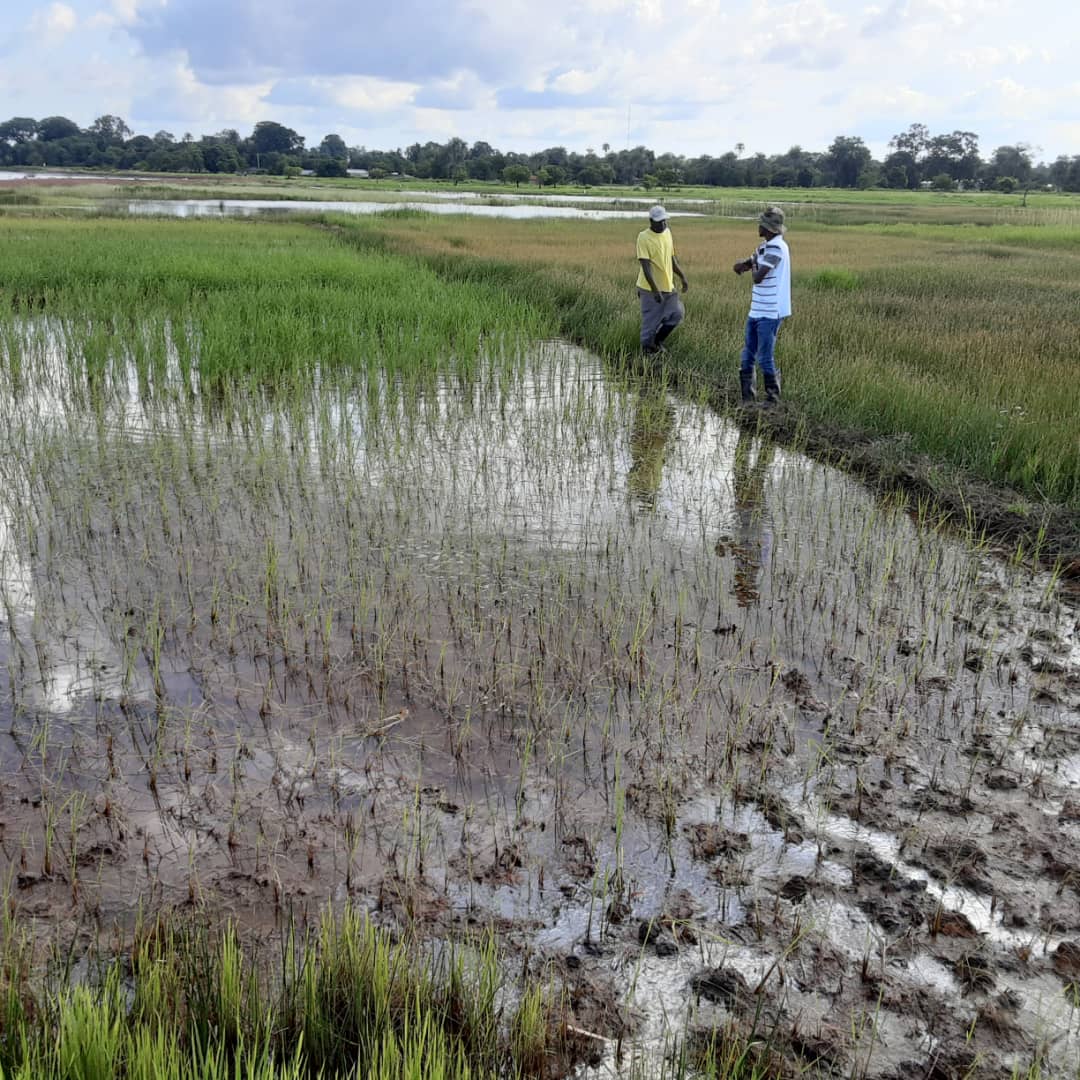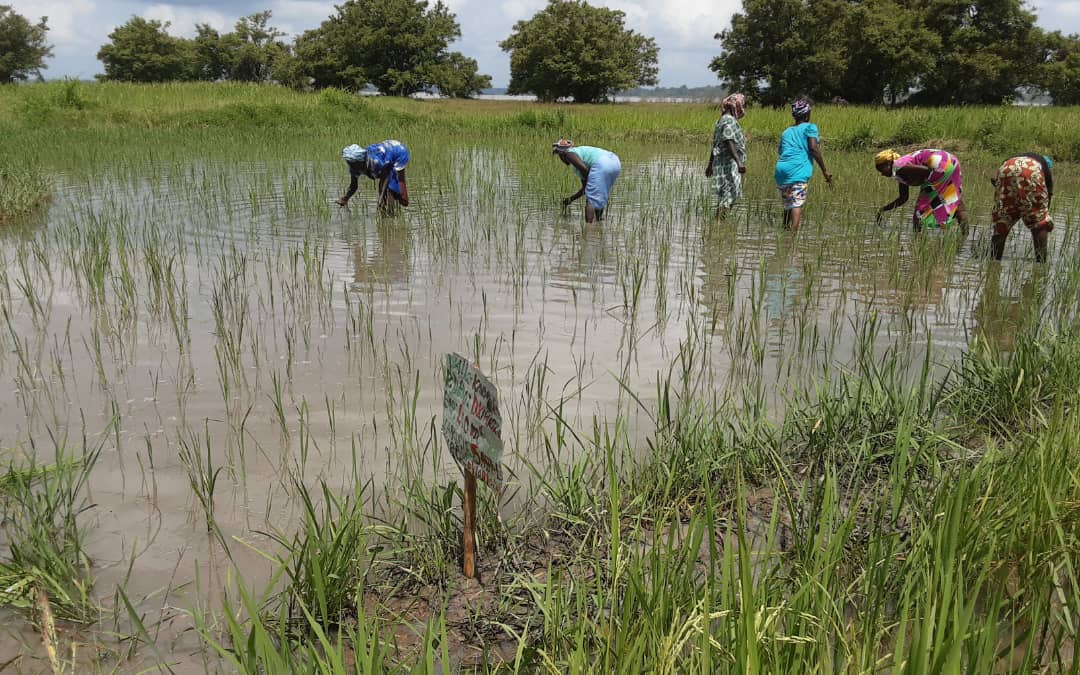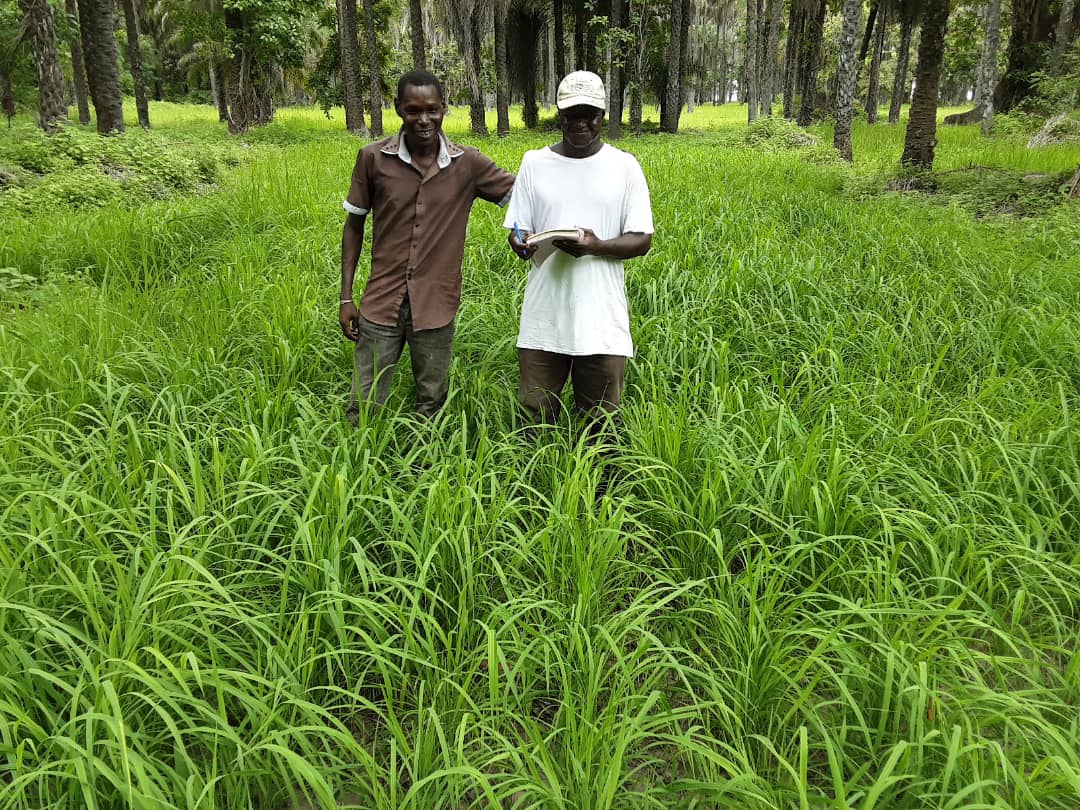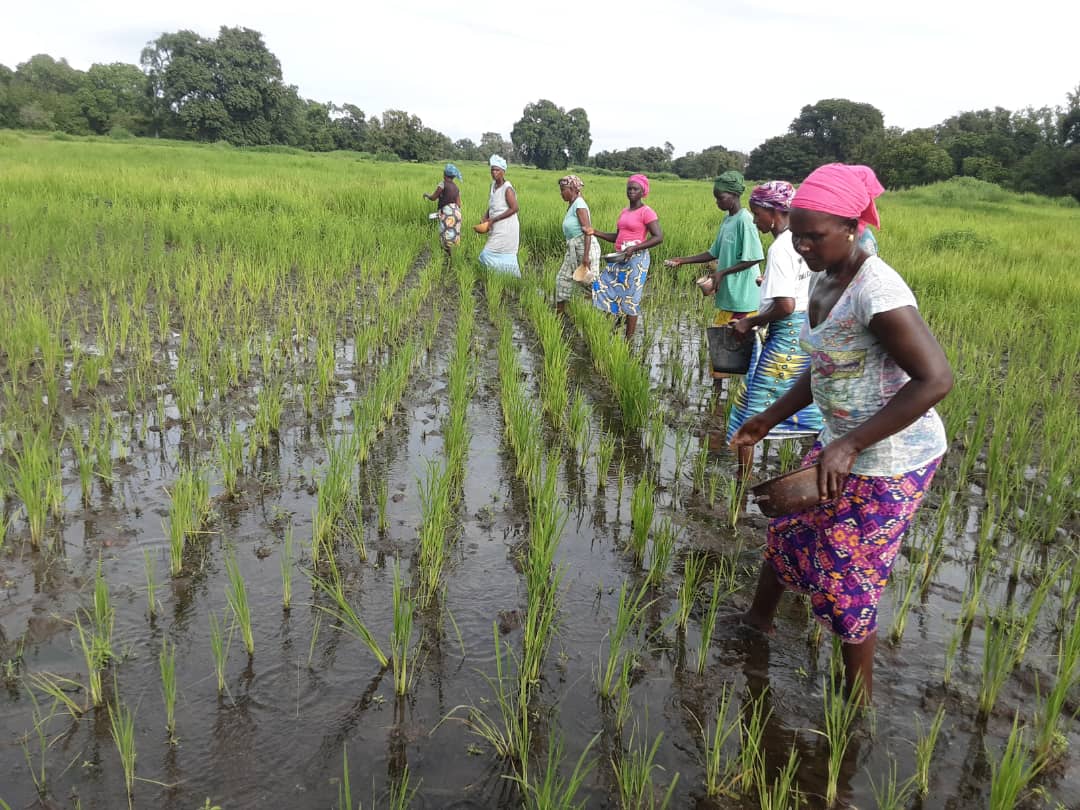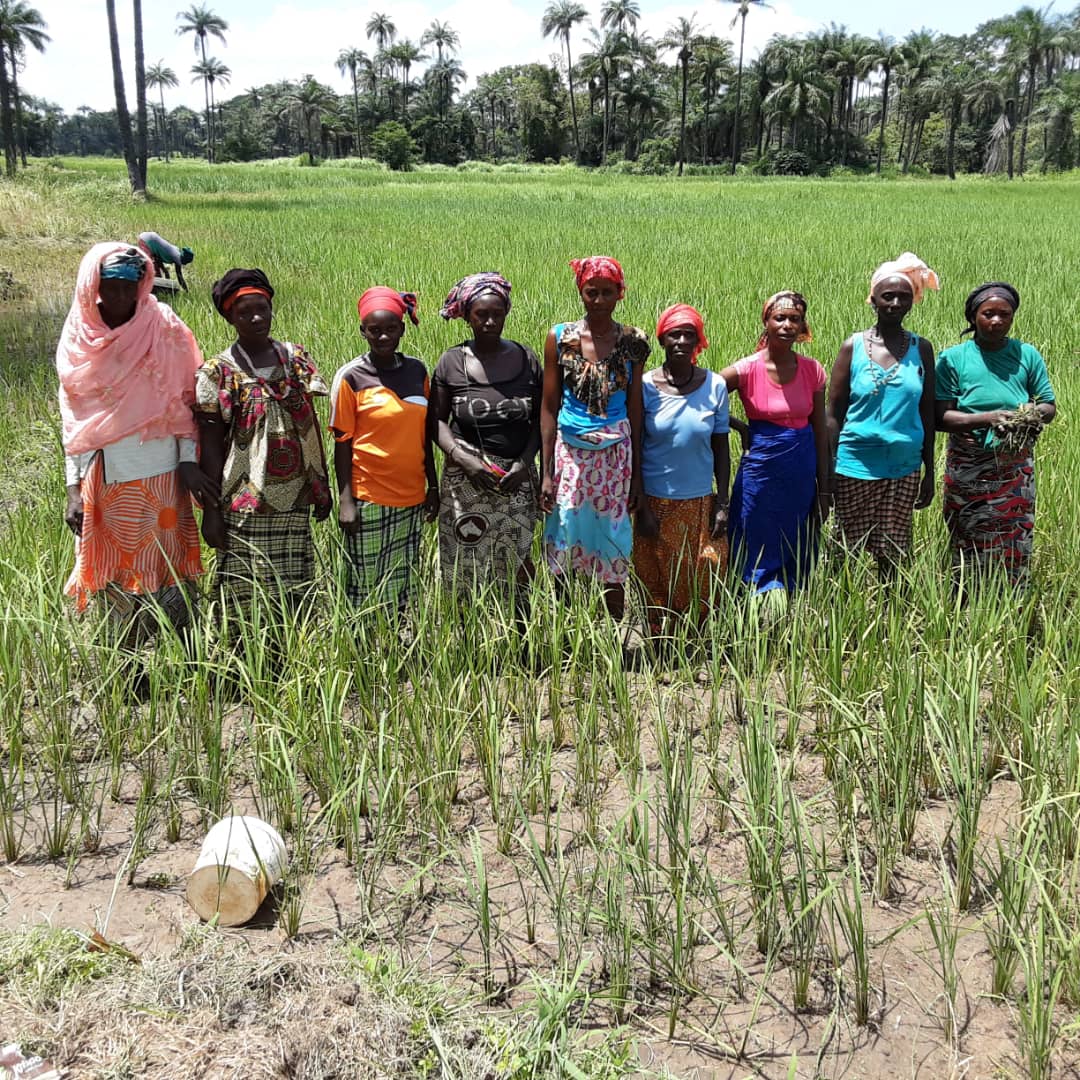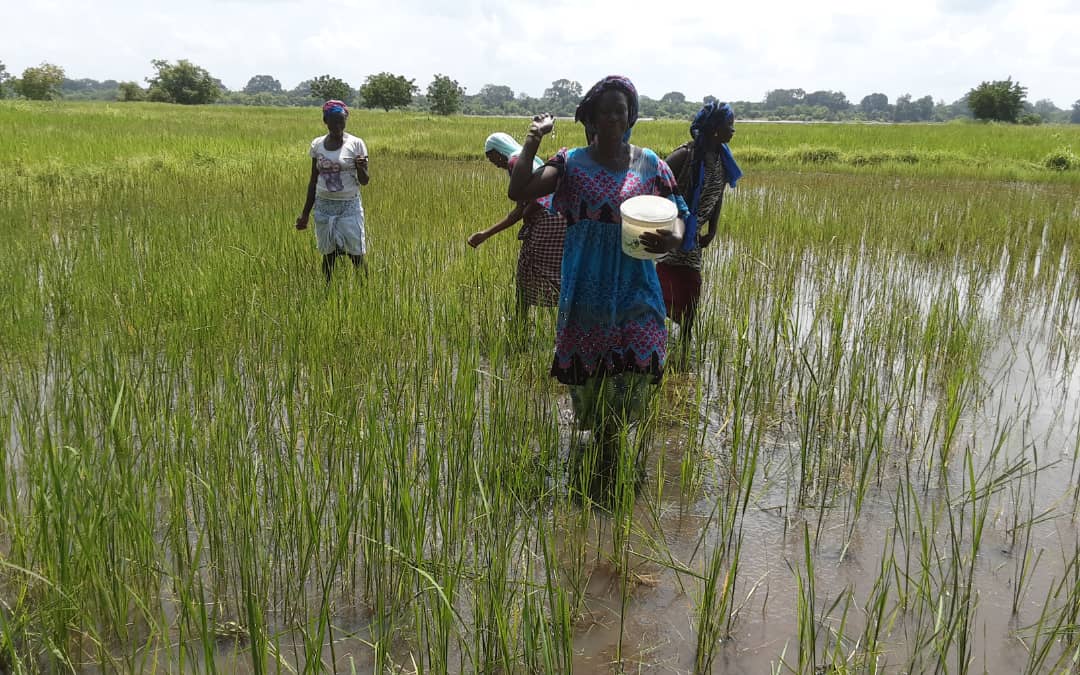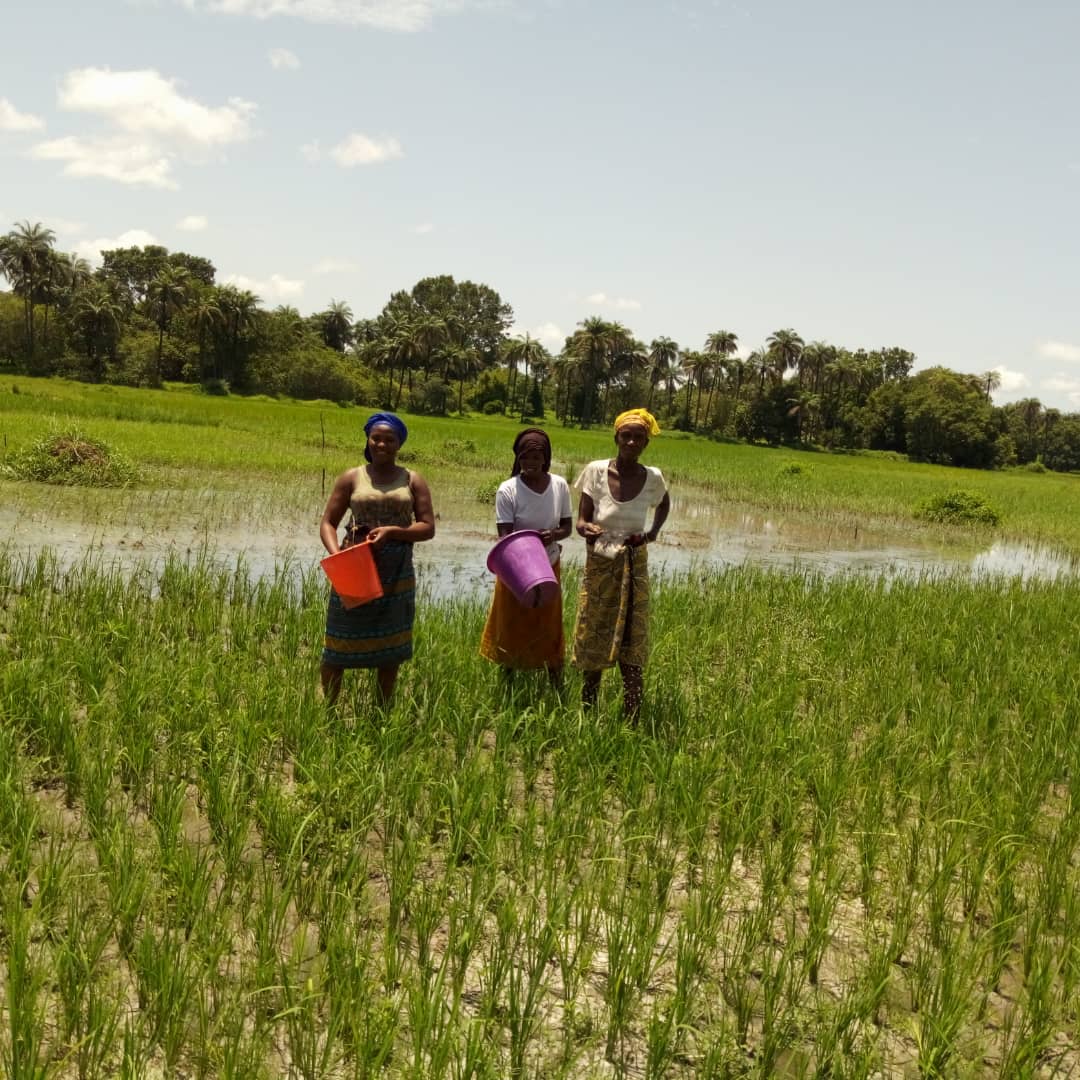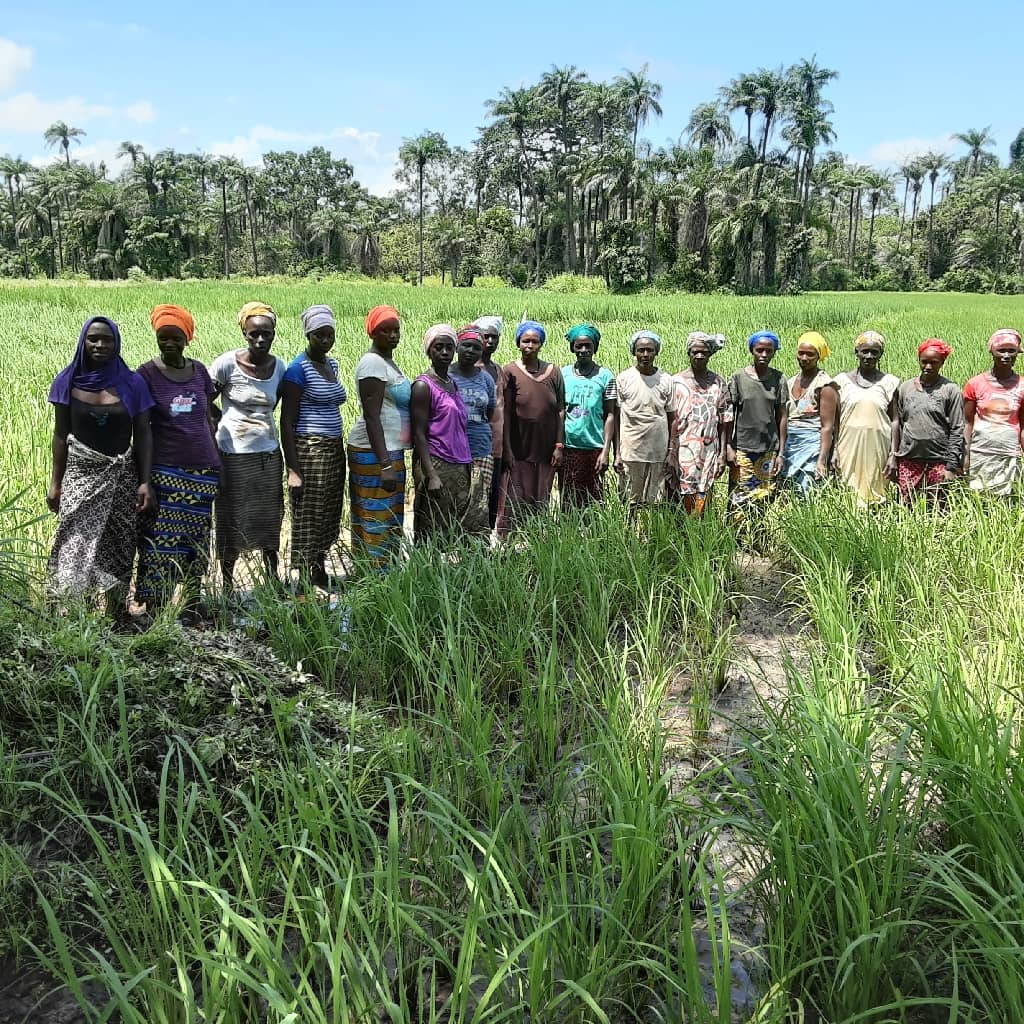PUBLICATIONS
2022
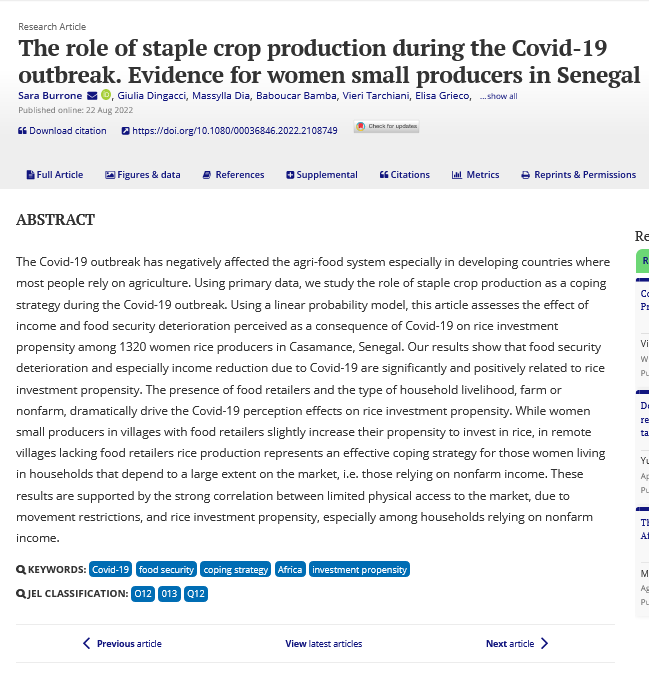
The role of staple crop production during the Covid-19 outbreak. Evidence for women small producers in Senegal
BURRONE S., DINGACCI G., DIA M., BAMBA B., TARCHIANI V., GRIECO E., ZINI C., DI VECCHIA A., VIGNAROLI P.
Remote Sens. 2020, 12(20), 3403; https://doi.org/10.3390/rs12203403
Abstract: The Covid-19 outbreak has negatively affected the agri-food system especially in developing countries where most people rely on agriculture. Using primary data, we study the role of staple crop production as a coping strategy during the Covid-19 outbreak. Using a linear probability model, this article assesses the effect of income and food security deterioration perceived as a consequence of Covid-19 on rice investment propensity among 1320 women rice producers in Casamance, Senegal. Our results show that food security deterioration and especially income reduction due to Covid-19 are significantly and positively related to rice investment propensity. READ MORE
2020
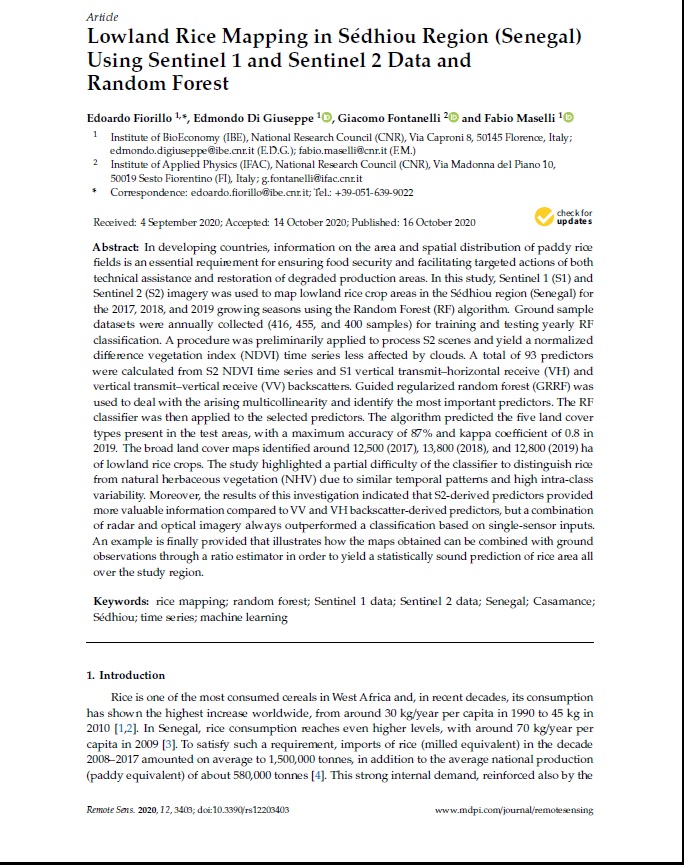
Lowland Rice Mapping in Sédhiou Region (Senegal) Using Sentinel 1 and Sentinel 2 Data and Random Forest
FIORILLO E., DI GIUSEPPE E., FONTANELLI G., MASELLI F.
Remote Sens. 2020, 12(20), 3403; https://doi.org/10.3390/rs12203403
Abstract: In developing countries, information on the area and spatial distribution of paddy rice fields is an essential requirement for ensuring food security and facilitating targeted actions of both technical assistance and restoration of degraded production areas. In this study, Sentinel 1 (S1) and Sentinel 2 (S2) imagery was used to map lowland rice crop areas in the Sédhiou region (Senegal) for the 2017, 2018, and 2019 growing seasons using the Random Forest (RF) algorithm. Ground sample datasets were annually collected (416, 455, and 400 samples) for training and testing yearly RF classification. A procedure was preliminarily applied to process S2 scenes and yield a normalized difference vegetation index (NDVI) time series less affected by clouds. A total of 93 predictors were calculated from S2 NDVI time series and S1 vertical transmit–horizontal receive (VH) and vertical transmit–vertical receive (VV) backscatters. READ MORE
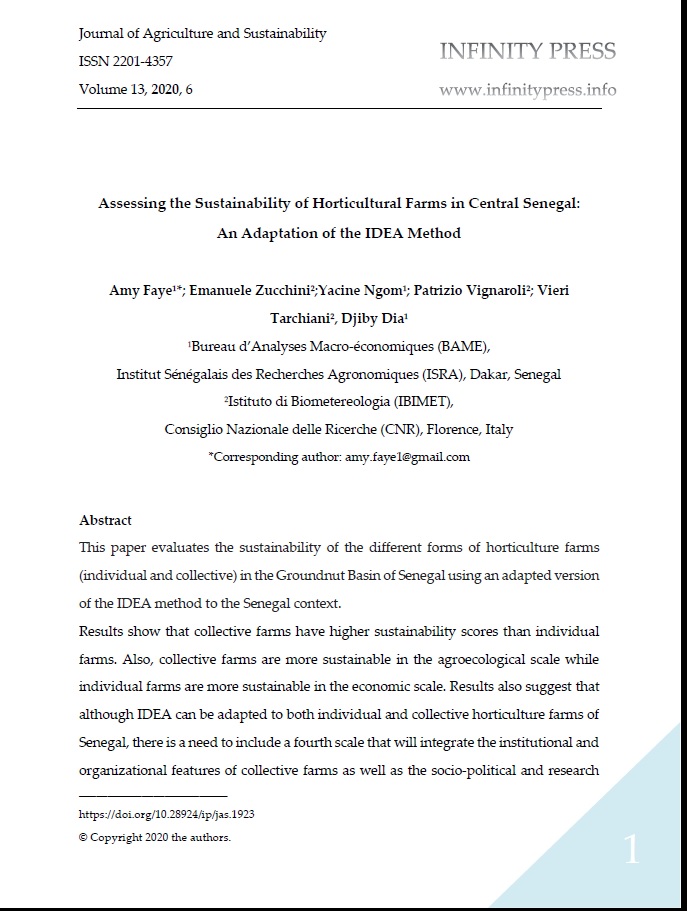
Assessing the Sustainability of Horticultural Farms in Central Senegal: An Adaptation of the IDEA Method
FAYE A., ZUCCHINI E., NGOM Y., VIGNAROLI P., TARCHIANI V., DIA D.
Journal of Agriculture and Sustainability, 2020, Vol.13 – ISSN 2201-4357
Abstract: This paper evaluates the sustainability of the different forms of horticulture farms (individual and collective) in the Groundnut Basin of Senegal using an adapted version of the IDEA method to the Senegal context.Results show that collective farms have higher sustainability scores than individual farms. Also, collective farms are more sustainable in the agroecological scale while individual farms are more sustainable in the economic scale. Results also suggest that although IDEA can be adapted to both individual and collective horticulture farms of Senegal, there is a need to include a fourth scale that will integrate the institutional and organizational features of collective farms as well as the socio-political and research context that can enable or hinder the adoption of sustainable farm practices.READ MORE
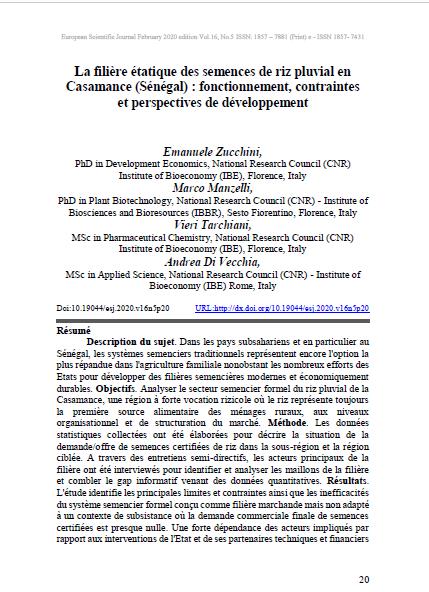
La filière étatique des semences de riz pluvial en
Casamance (Sénégal) : fonctionnement, contraintes
et perspectives de développement
ZUCCHINI, E., MANZELLI, M., TARCHIANI, V., & DI VECCHIA, A. (2020).
Résumé: Description du sujet. Dans les pays subsahariens et en particulier au Sénégal, les systèmes semenciers traditionnels représentent encore l’option la plus répandue dans l’agriculture familiale nonobstant les nombreux efforts des Etats pour développer des filières semencières modernes et économiquement durables. Objectifs. Analyser le secteur semencier formel du riz pluvial de la Casamance, une région à forte vocation rizicole où le riz représente toujoursla première source alimentaire des ménages READ MORE
2019
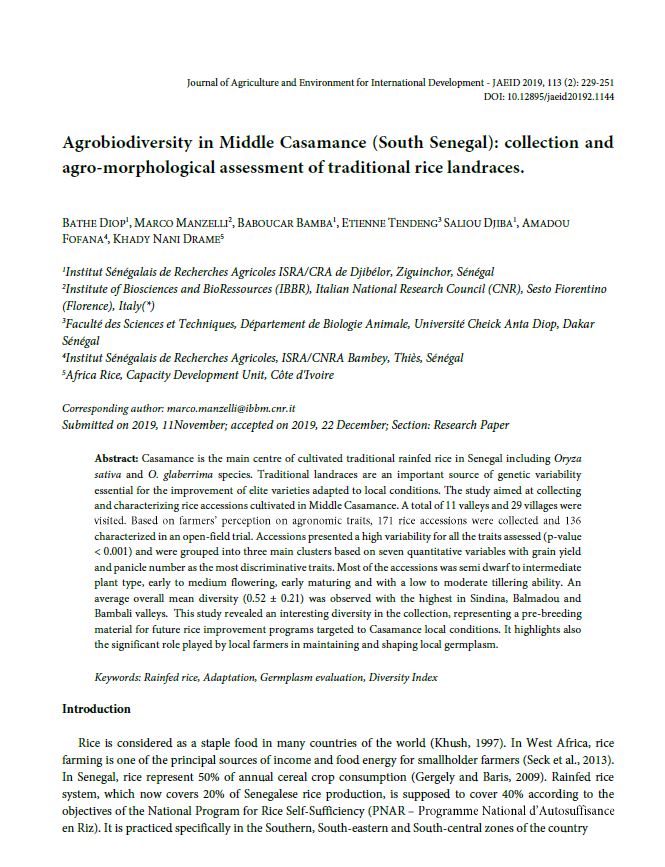
Agrobiodiversity in Middle Casamance (South Senegal): collection and agro-morphological assessment of traditional rice landraces.
Abstract: Casamance is the main centre of cultivated traditional rainfed rice in Senegal including Oryza sativa and O. glaberrima species. Traditional landraces are an important source of genetic variability essential for the improvement of elite varieties adapted to local conditions. The study aimed at collecting and characterizing rice accessions cultivated in Middle Casamance. READ MORE..
2015
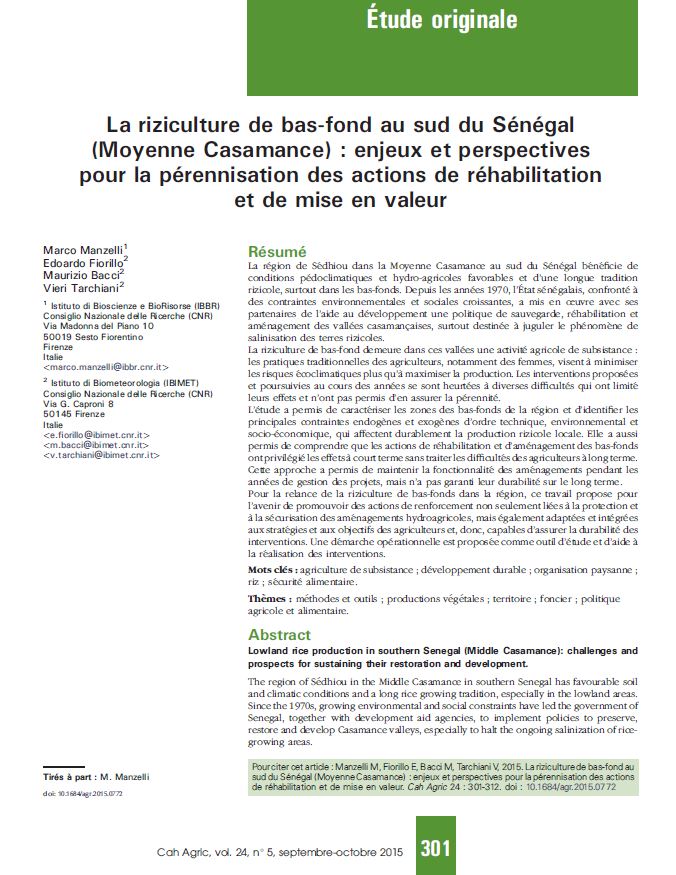
La riziculture de bas-fond au sud du Sénégal (Moyenne Casamance) : enjeux et perspectives pour la pérennisation des actions de réhabilitation et de mise en valeur.
MANZELLI, M., FIORILLO, E., BACCI, M., & TARCHIANI, V. (2015).
Cahiers Agricultures, 24(5), 301-312. https://doi.org/10.1684/agr.2015.0772
Résumé: La région de Sédhiou dans la Moyenne Casamance au sud du Sénégal bénéficie de conditions pédoclimatiques et hydro-agricoles favorables et d’une longue tradition rizicole, surtout dans les bas-fonds. Depuis les années 1970, l’État sénégalais, confronté à des contraintes environnementales et sociales croissantes, a mis en oeuvre avec ses partenaires de l’aide au développement une politique de sauvegarde, réhabilitation et aménagement des vallées casamançaises, surtout destinée à juguler le phénomène de salinisation des terres rizicoles. READ MORE..
